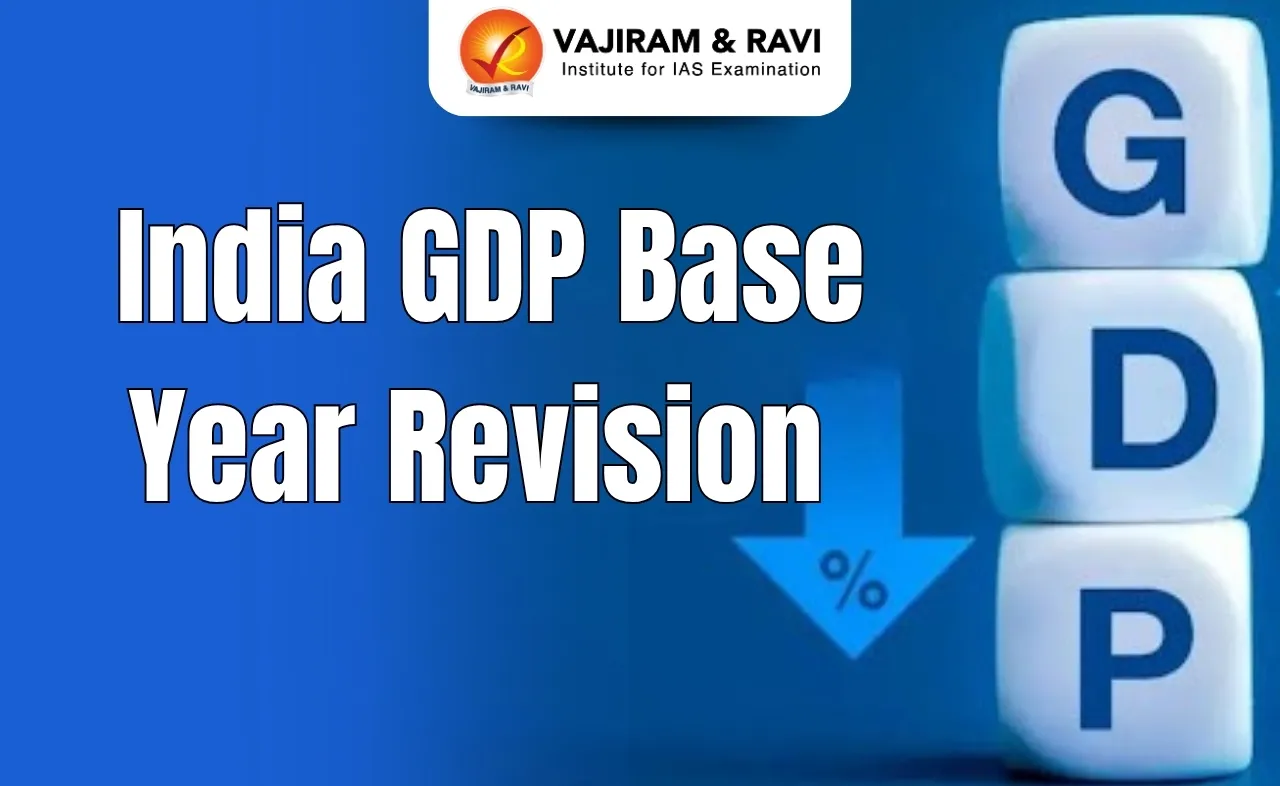What’s in today’s article?
- Why in news?
- What is sovereign AI?
- India’s AI Mission
- Centre’s Plan to Step up Compute Capacity under the AI Mission
- What are the other Plans of Government to Push AI in India?
Why in news?
- As per the Union Minister of State for Electronics and IT, the ambitious artificial intelligence (AI) Mission may soon head for Cabinet approval and could have an outlay of more than Rs 10,000 crore.
- As part of the programme, the government wants to:
- develop its own ‘sovereign AI’,
- build computational capacity in the country, and
- offer compute-as-a-service to India’s startups.
Sovereign AI
- About
- Sovereign AI is the strategic development and deployment of AI technologies by national governments.
- It involves efforts to develop AI technologies to protect national security, economic competitiveness, and societal well-being.
- Sovereign AI involves:
- Independence from individual providers
- Consideration of the legal regulatory framework
- Compliance with data protection & transparency obligations
- Avoidance of potential copyright infringements
- Self-determined selection of the models used
- Basically, sovereign AI infrastructure refers to the idea of an autonomous and self-contained AI ecosystem.
- Such infrastructure is coming up in countries like India, Sweden, Japan, and France that recognise that they should use their data to develop their own AI.
- Sovereign AI and India
- India has pitched itself as a country that has effectively used technology to develop and deliver governance solutions at a mass scale.
- E.g., the biometric identity programme Aadhaar and payments solution Unified Payments Interface (UPI) etc.
- These solutions form the bedrock of what New Delhi calls Digital Public Infrastructure (DPI).
- In DPI, the underlying technology is sanctioned by the government and is later offered to private entities to develop various use cases.
- Now, India wants to take the same DPI approach with AI.
- Through sovereign AI, government is looking to focus on real-life use cases in healthcare, agriculture, governance, language translation, etc., to maximize economic development.
- India has pitched itself as a country that has effectively used technology to develop and deliver governance solutions at a mass scale.
India’s AI Mission
- The PM of India at the Global Partnership on Artificial Intelligence (GPAI) Summit 2023 (New Delhi) announced that India will launch an AI mission.
- The aim of this mission will be to establish sufficient AI compute power in the country. This will help India’s innovators and startups get better facilities.
- Under this mission, AI applications in agriculture, healthcare and education-related sectors will be promoted.
Centre’s Plan to Step up Compute Capacity under the AI Mission
- According to the Union Ministry of Electronics and IT (MeitY), the Centre is looking to build computational capacity in the country and offer compute-as-a-service to India’s startups.
- The capacity building will be done both within the government and through a public-private partnership (PPP) model.
- Under the public model, compute capacity will be set up within the C-DAC as part of the National Supercomputing Mission.
- C-DAC already has the Rudra and Param systems.
- The government is exploring various incentive structures for private companies to set up computing centres in the country. These models range from a capital expenditure subsidy model to offering them a usage fee.
- A capital expenditure subsidy model which has been employed under the semiconductor scheme
- Usage” fee model where companies can be incentivised depending on their operational expenses, to offer them a “usage” fee.
- Under the public model, compute capacity will be set up within the C-DAC as part of the National Supercomputing Mission.
- In total, the country is looking –
- To build a compute capacity of anywhere between 10,000 GPUs (graphic processing units) and 30,000 GPUs under the PPP model and
- An additional 1,000-2,000 GPUs through the PSU Centre for Development of Advanced Computing (C-DAC).
- GPU is a chip or electronic circuit that can render graphics for display on an electronic device.
- GPUs are designed to accelerate computer graphics and image processing. They can perform mathematical calculations at high speed.
- These calculations are used for tasks like graphics rendering, machine learning, and video editing.
Other Plans of Government to Push AI in India
- Apart from building computing capacities, the government is also working on building datasets and making them available to Indian startups.
- Earlier, the MeitY released a draft of the National Data Governance Framework Policy under which it proposed the creation of an India Datasets platform.
- The platform will consist of non-personal and anonymised datasets from Central government entities that have collected data from Indian citizens or those in India.
- The idea is that the non-personal data housed within this programme would be accessible to startups and Indian researchers.
- Among the stated objectives of the policy is to modernise the government’s data collection, with an aim to improve governance and to enable AI and data-led research and startup ecosystems in the country.
- The Centre is also considering issuing a directive to big tech companies like Facebook, Google and Amazon to share anonymised personal data in their possession with the India Datasets platform.
Q1) What is National Supercomputing Mission (NSM)?
The National Supercomputing Mission (NSM) is a project to design and manufacture 73 supercomputers in India. The supercomputers will be connected to research and academic institutions across the country and to the National Knowledge Network (NKN). The goal of the NSM is to provide the country with the infrastructure to meet the growing computational needs of researchers, academia, MSMEs, and startups.
Q2) What is Digital Public Infrastructure (DPI)?
Digital Public Infrastructure (DPI) is a network of platforms and blocks that provide essential digital services and promote accessibility and inclusion. It’s similar to roads, which are a physical network that allows people to connect and access goods and services.
Source: Centre’s sovereign AI push: Compute mission may get over Rs 10,000 crore outlay | Medianama | Indian Express | Financial Express
Last updated on June, 2025
→ UPSC Notification 2025 was released on 22nd January 2025.
→ UPSC Prelims Result 2025 is out now for the CSE held on 25 May 2025.
→ UPSC Prelims Question Paper 2025 and Unofficial Prelims Answer Key 2025 are available now.
→ UPSC Calendar 2026 is released on 15th May, 2025.
→ The UPSC Vacancy 2025 were released 1129, out of which 979 were for UPSC CSE and remaining 150 are for UPSC IFoS.
→ UPSC Mains 2025 will be conducted on 22nd August 2025.
→ UPSC Prelims 2026 will be conducted on 24th May, 2026 & UPSC Mains 2026 will be conducted on 21st August 2026.
→ The UPSC Selection Process is of 3 stages-Prelims, Mains and Interview.
→ UPSC Result 2024 is released with latest UPSC Marksheet 2024. Check Now!
→ UPSC Toppers List 2024 is released now. Shakti Dubey is UPSC AIR 1 2024 Topper.
→ Also check Best IAS Coaching in Delhi
























